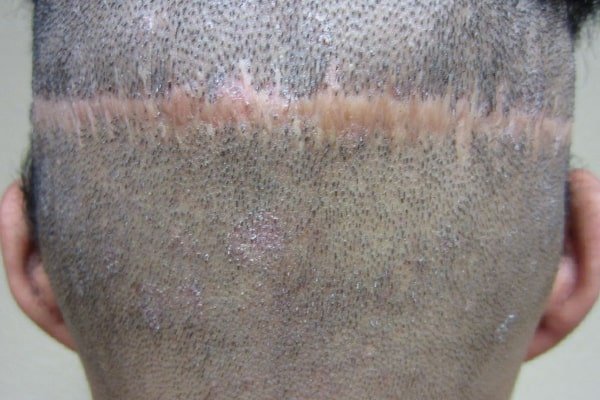FUT Strip Hair Transplant
FUT Strip hair transplantation is an essentially outdated method of hair transplantation for the treatment of alopecia. In recent years, FUT-Strip has been practiced less and less as the less invasive FUE technique has become popular. The reason for this is that the results of the FUE technique are very impressive without the consequences of FUT-Strip hair transplantation: during FUE, large numbers of hair follicles are extracted and there is a completely natural result, with no pain for the patient and no scarring in the donor area, unlike the FUT technique which has a more difficult post-operative period and leaves a large scar on the patient’s head.

FUT – STRIP TECHNIQUE
Post-operative side effects
The main disadvantage of the FUT technique is the creation of permanent and malformed scars in the donor area, which are accompanied by chronic hypesthesia of the area or even painful neuromas in the scar area. At least 5-10% of patients who have undergone FUT-Strip report chronic pain in the area of the postoperative scar, while hypesthesia over the scar is observed in 20-25% of patients who have undergone hair transplantation with the FUT-Strip method. The rates of complications increase even more in cases of reoperation or multiple FUT-Strip procedures.
Another major disadvantage is that the hair follicles suffer injury during the Strip procedure resulting in reduced survival of the transplanted hair follicles. Also, the creation of sockets in the recipient area increases bleeding, swelling and pain after FUT transplantation, and the use of large-sized grafts often creates an insensitive and unnatural result, with hair that looks “fake”, like a doll or doll-like effect.

FUE use for FUT – Strip technique restoration
Nowadays, many people who have undergone hair transplantation with the Strip method resort to specialist Plastic Surgeons in an attempt to restore or reduce the scar created by the Strip. Specifically, at Advanced Hair Clinics, a 35-40% of patients undergoing FUE hair transplants have previously undergone FUT hair transplants and come in for either thickening or correction of the natural look of the hairline.
Furthermore, in 15-20% of cases who have previously undergone FUT transplantation, a correction of the post-operative scar is required because it is malformed or visible. For all these reasons, there has been a steady decline in hair transplantation with the FUT-Strip method worldwide in recent years.
